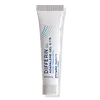What's inside
What's inside
 Key Ingredients
Key Ingredients

 Benefits
Benefits

 Concerns
Concerns

 Ingredients Side-by-side
Ingredients Side-by-side

Adapalene 0.1%
Benzoyl Peroxide 2.5%
Niacinamide 4%
SmoothingWater
Skin ConditioningPropylene Glycol
HumectantGlycerin
HumectantPanthenol
Skin ConditioningCetyl Alcohol
EmollientGlyceryl Stearate
EmollientIsohexadecane
EmollientIsododecane
EmollientC13-15 Alkane
SolventDimethicone
EmollientPropanediol
SolventPolyacrylate-13
Polyisobutene
Polysorbate 20
EmulsifyingPolyurethane-39
Phenoxyethanol 0.6%
PreservativeTocopheryl Acetate
AntioxidantCeramide AP
Skin ConditioningCeramide EOP
Skin ConditioningCeramide NP
Skin ConditioningPhytosphingosine
Skin ConditioningCholesterol
EmollientSodium Lauroyl Lactylate
EmulsifyingXanthan Gum
EmulsifyingCarbomer
Emulsion StabilisingSodium Hyaluronate
HumectantSodium Citrate
BufferingDiethylhexyl Sodium Sulfosuccinate
CleansingSodium Hydroxide
BufferingAdapalene 0.1%, Benzoyl Peroxide 2.5%, Niacinamide 4%, Water, Propylene Glycol, Glycerin, Panthenol, Cetyl Alcohol, Glyceryl Stearate, Isohexadecane, Isododecane, C13-15 Alkane, Dimethicone, Propanediol, Polyacrylate-13, Polyisobutene, Polysorbate 20, Polyurethane-39, Phenoxyethanol 0.6%, Tocopheryl Acetate, Ceramide AP, Ceramide EOP, Ceramide NP, Phytosphingosine, Cholesterol, Sodium Lauroyl Lactylate, Xanthan Gum, Carbomer, Sodium Hyaluronate, Sodium Citrate, Diethylhexyl Sodium Sulfosuccinate, Sodium Hydroxide
 Reviews
Reviews

Alternatives
Ingredients Explained
These ingredients are found in both products.
Ingredients higher up in an ingredient list are typically present in a larger amount.
Carbomer is a polymer of acrylic acid. Its main role is to create a gel consistency.
A high amount of carbomer can cause pilling or balling up of products. Don't worry, most products contain 1% or less of carbomer.
Propylene Glycol is an odorless, colorless liquid. As a humectant, it helps skin retain moisture. It also aids in delivering active ingredients.
Another role of this ingredient is preventing a product from melting or freezing. Propylene glycol also adds antimicrobrial properties to a product, elongating product lifespan.
This ingredient is considered an organic alcohol and commonly added into both cosmetics and foods.
Those with sensitive skin or conditions may develop a rash when using this ingredient.
Learn more about Propylene GlycolSodium Hydroxide is also known as lye or caustic soda. It is used to adjust the pH of products; many ingredients require a specific pH to be effective.
In small amounts, sodium hydroxide is considered safe to use. However, large amounts may cause chemical burns due to its high alkaline.
Your skin has a natural pH and acid mantle. This acid mantle helps prevent harmful bacteria from breaking through. The acid mantle also helps keep your skin hydrated.
"Alkaline" refers to a high pH level. A low pH level would be considered acidic.
Learn more about Sodium HydroxideWater. It's the most common cosmetic ingredient of all. You'll usually see it at the top of ingredient lists, meaning that it makes up the largest part of the product.
So why is it so popular? Water most often acts as a solvent - this means that it helps dissolve other ingredients into the formulation.
You'll also recognize water as that liquid we all need to stay alive. If you see this, drink a glass of water. Stay hydrated!
Learn more about WaterAdapalene is a third-generation topical retinoid and is best known for treating mild to moderate acne. It’s also commonly as for its brand name, Differin.
Adapalene has some great benefits:
You can buy over-the-counter adapalene at 0.1% gel strength. Higher concentrations require a prescription.
Oleyl adapalenate is a cosmetic-grade derivative of adapalene that does not require a prescription since it is considered a cosmetic ingredient.
Learn more about Adapalene